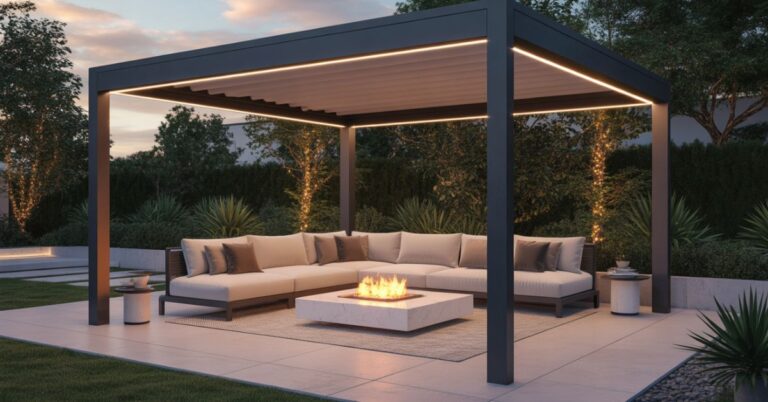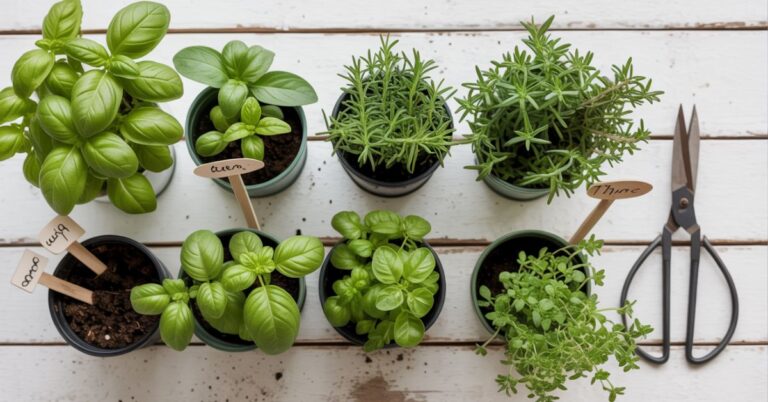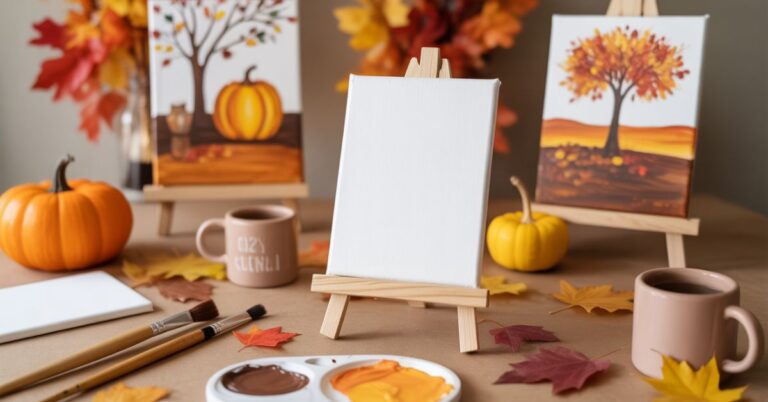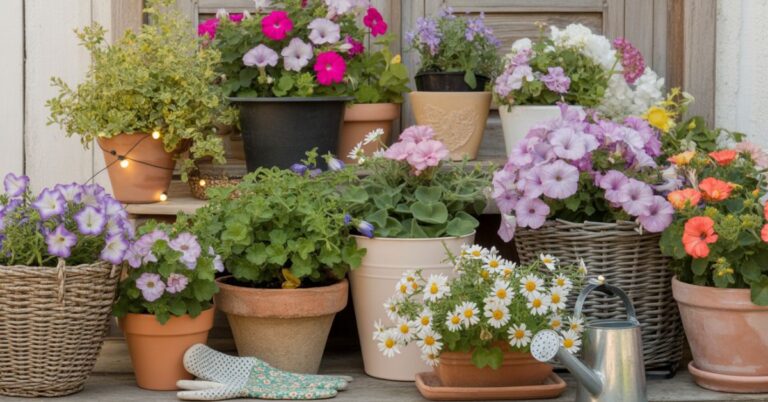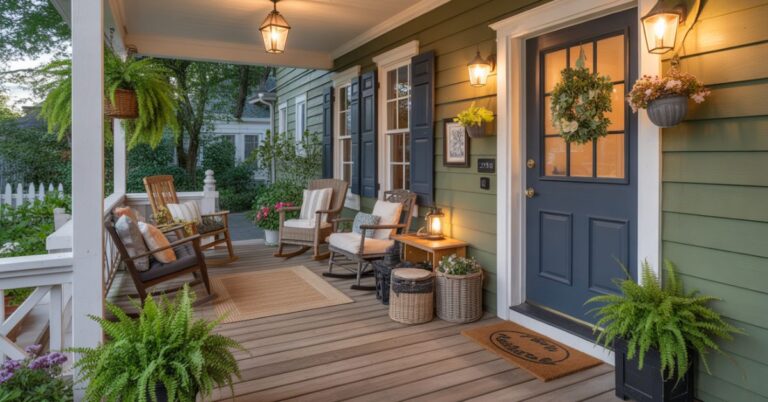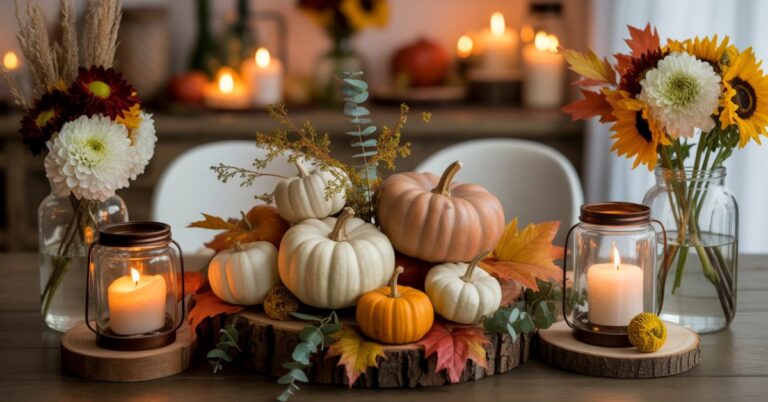52+ Outdoor Patio Ideas for Small Spaces
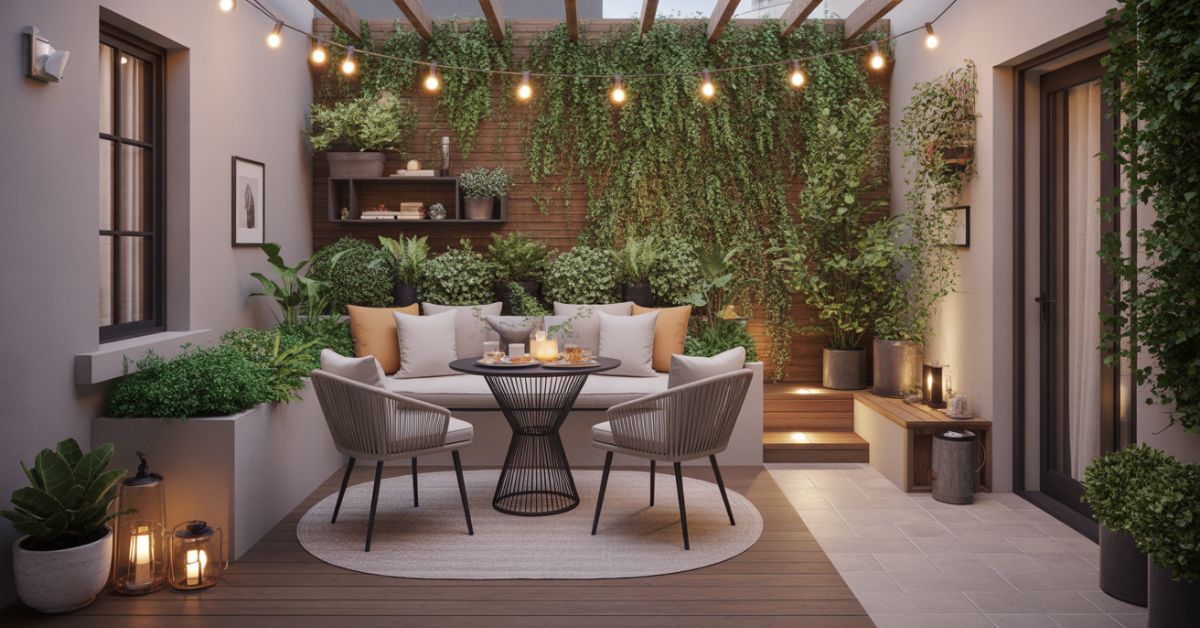
Your small outdoor patio sits empty because nothing seems to fit. Every time you browse furniture stores, the sectionals and dining sets mock you with their sprawling dimensions. That tiny balcony or compact backyard corner feels too cramped to bother decorating.
Meanwhile, your neighbors somehow transformed their equally small spaces into cozy retreats. You watch them enjoying morning coffee and evening cocktails on patios that shouldn’t work but somehow do. The frustration builds because you know your small patio space has potential you just can’t figure out how to unlock it without the area feeling cluttered or claustrophobic.
This guide delivers 52 small patio ideas that prove size doesn’t limit style or function. You’ll discover space-maximizing furniture arrangements, vertical gardening techniques, and optical illusions that make compact areas feel surprisingly spacious. Whether you’re working with a narrow balcony, tiny courtyard, or postage-stamp backyard, these strategies help you create an outdoor living space that feels intentionally intimate rather than accidentally small.
How Do I Make a Small Patio Feel Bigger?
Light color palettes visually expand tight quarters in any outdoor patio design. Paint walls, fences, and furniture in whites, soft grays, or pale blues. These hues reflect natural light and create airiness that darker colors absorb. Your outdoor patio instantly feels more open when surfaces bounce light around rather than swallowing it. Add white or cream cushions to reinforce this brightening effect and maintain a calm, spacious vibe.
Mirrors strategically placed can transform a compact outdoor patio by creating depth illusions. Mount weatherproof mirrors on walls or fences to reflect views and greenery. The reflections trick the eye into perceiving more space than actually exists. Position mirrors to capture interesting angles or lush plant groupings. This simple outdoor patio design trick doubles your perceived square footage, without a single renovation.
Vertical lines draw the eyes upward and away from limited floor space, an essential tactic for maximizing a small outdoor patio. Tall planters, vertical gardens, and floor-to-ceiling privacy screens emphasize height and add a sense of grandeur. Even string lights hung vertically instead of horizontally enhance that upward pull. When attention moves up, your outdoor patio feels more open and inviting, regardless of its actual dimensions.
Minimal furniture prevents a cramped feeling and keeps your outdoor patio airy and functional. Resist the urge to fill every inch—two comfortable chairs often work better than a full dining set in tight spaces. Leaving negative space creates balance; the emptiness actually makes your outdoor patio appear larger. Quality over quantity is the golden rule when selecting furniture for smaller outdoor areas.
What Furniture Works Best in Small Patios?
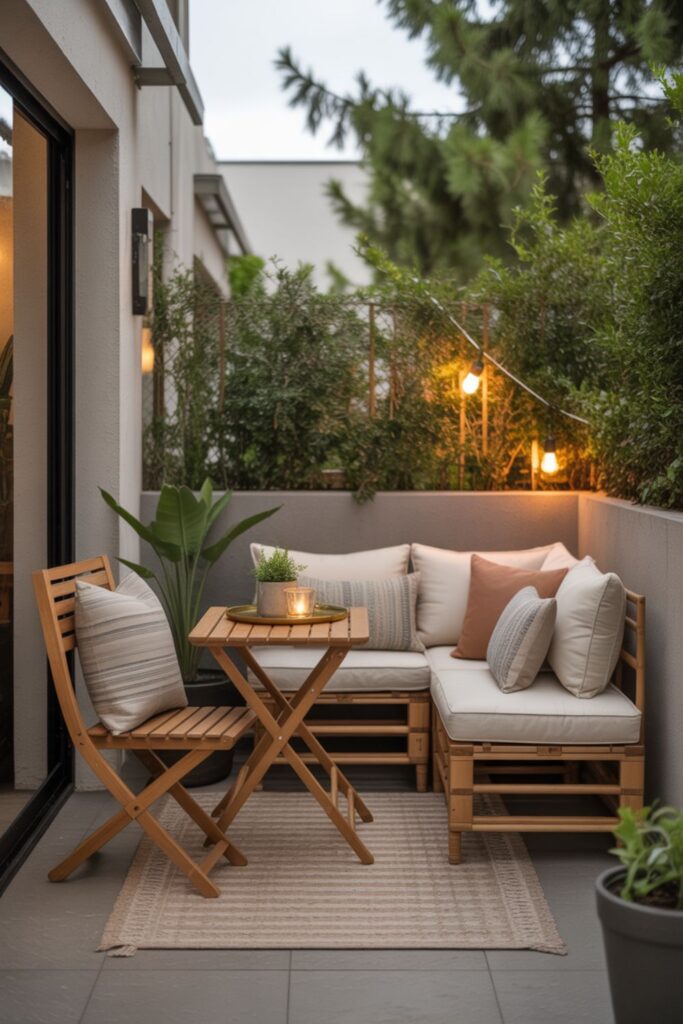
Folding bistro sets deliver functionality without permanent commitment, making them perfect for any outdoor patio. These space-saving outdoor patio furniture pieces collapse flat when not in use. Hang chairs on wall hooks, lean the table in a corner, and suddenly you have open floor space for yoga or kids to play. Affordable and practical, bistro sets typically cost between $50–$200 and work brilliantly on small balconies, terraces, or compact courtyards.
Benches with storage serve double duty on a small outdoor patio. Whether built-in or purchased, these benches hide cushions, gardening tools, or outdoor games inside. The seating surface provides comfortable lounging while the interior handles storage challenges. This multifunctional outdoor patio furniture eliminates the need for separate storage units that eat up valuable square footage.
Stackable chairs adapt beautifully to changing needs and limited outdoor patio layouts. Keep two or four chairs stacked neatly in a corner and pull them out when guests arrive. Brands like Fermob and IKEA offer colorful, weather-resistant stackable designs that add both personality and practicality. This flexibility allows your outdoor patio to shift effortlessly from solo relaxation to small gatherings.
Corner sectionals make the most of awkward angles, creating comfort and efficiency in your outdoor patio setup. L-shaped seating fits snugly into corners, utilizing space that straight sofas often waste. Add a small coffee table in the center, and you’ve got a complete conversation zone. Many compact outdoor patio sectionals also feature hidden storage beneath the cushions, combining seating and organization in one smart design.
How Can I Add Dining Space to a Tiny Patio?
Wall-mounted drop-leaf tables disappear when not needed. Mount a hinged table to your wall or railing that folds flat after meals. Lift it for dining, drop it down for floor space. These tables cost $30-150 depending on materials. This small patio dining solution lets you enjoy meals outside without permanently sacrificing square footage.
Bar-height tables with stools take less room than traditional dining sets. Narrow bar tables fit against walls or railings. Backless stools tuck completely underneath when not in use. This vertical approach to dining in small spaces feels modern while freeing up walking paths around your compact patio.
Nesting tables provide flexible surfaces. Two or three tables of graduated sizes stack together compactly. Pull them apart when serving food or drinks, nest them afterward. Use the smallest as a side table daily, deploy the full set for parties. This adaptable small space furniture adjusts to your immediate needs.
Lap trays offer the ultimate space saver. Skip tables entirely and use bamboo lap trays for casual dining. Store them vertically against a wall when not needed. This unconventional tiny patio dining approach works beautifully for one or two people who prioritize lounge seating over formal meals.
Read More About: 37+ Pergola Ideas Transform Your Outdoor Space
What Are the Best Small Patio Layout Ideas?
L-shaped arrangements maximize corner spaces naturally in an outdoor patio. Place seating along two perpendicular walls with a small table at the junction. This smart outdoor patio layout creates an intimate conversation area while leaving a clear pathway through your compact space. The configuration ensures every inch feels intentional and open, not cluttered or crammed.
Single-wall layouts are ideal for narrow outdoor patios or apartment balconies. Line furniture against the longest wall, leaving just enough room to walk in front. Opt for benches or loveseats instead of individual chairs to reduce gaps and increase seating efficiency. Add fold-down tables or slim console tables against the wall to save even more space. This clever outdoor patio design allows for entertaining without sacrificing comfort in tight quarters.
Floating furniture in the center may sound counterintuitive, but it works beautifully in square outdoor patio spaces. Position a small loveseat or two chairs with a table between them in the middle rather than against walls. This approach defines a cozy living zone while keeping circulation space free around it. The result is an outdoor patio that feels thoughtfully designed, not simply lined with furniture.
Zone definition helps separate functions clearly within your outdoor patio. Even in as little as 64 square feet, you can create distinct seating and plant zones using different flooring textures, rugs, or furniture orientations. These subtle boundaries visually organize your outdoor patio, preventing it from feeling chaotic. Each zone serves a clear purpose, enhancing both comfort and style within limited space.
How Do I Create Privacy in Small Outdoor Spaces?
Tall planters with bamboo form instant natural walls. Position large containers filled with clumping bamboo along your patio perimeter. Bamboo grows densely and tall enough to block sightlines without consuming excessive floor space. Choose clumping varieties that won’t spread aggressively. This living privacy screen looks intentional rather than defensive.
Lattice panels with climbing vines provide elegant screening. Mount lattice to railings or between posts. Train clematis, jasmine, or passion vines up the panels. Within one season you have flowering privacy that smells amazing. The vertical approach to small patio privacy creates enclosure without shrinking your usable area.
Outdoor curtains offer adjustable privacy. Hang weather-resistant fabric panels on tension rods or cable wires. Open curtains for views and air, close them when neighbors are nearby. Choose light colors so closed curtains don’t darken your space. This flexible privacy solution costs $30-100 and transforms the feel of your small outdoor patio.
Bamboo reed fencing attaches quickly to existing railings. These roll fencing sections cost $30-60 for substantial coverage. Zip-tie them to balcony railings or mount to posts. The natural texture adds warmth while blocking views. This instant small patio privacy installs in under an hour without special tools.
What Vertical Gardening Ideas Save Floor Space?
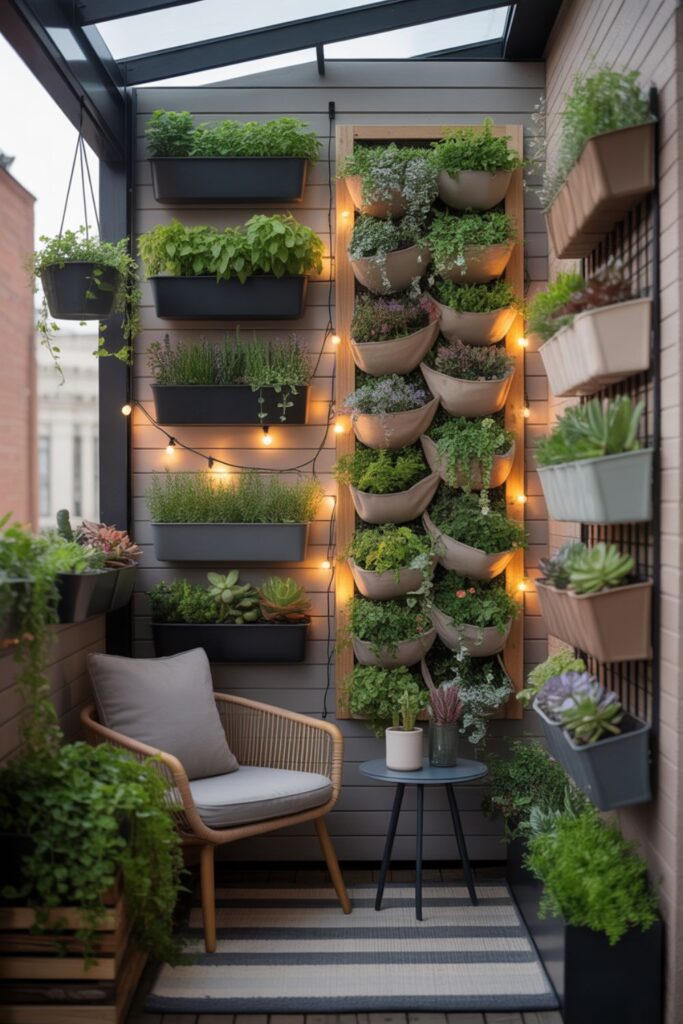
Wall-mounted planters transform blank walls into living gardens and instantly elevate your outdoor patio design. Attach metal grid panels to walls and hang pots using S-hooks, or mount individual planters directly to surfaces. Herbs, succulents, and trailing plants thrive beautifully in these vertical arrangements. This vertical outdoor patio garden adds lush greenery without occupying a single inch of floor space—perfect for compact areas.
Railing planters make smart use of overlooked real estate on your outdoor patio or balcony. These specialized containers hook securely over balcony railings, turning the outer edge into a growing zone. Fill them with herbs, flowers, or cascading vines that spill outward instead of crowding the patio floor. Affordable and stylish, these outdoor patio railing planters typically cost $10–$30 each and dramatically increase your planting capacity.
Tiered plant stands maximize vertical space and bring structure to your outdoor patio garden. Corner stands with three to five shelves can hold multiple pots within the footprint of one, while ladder-style stands lean gracefully against walls. Arrange plants by height—with taller ones on the bottom—to create a visually appealing, layered look. This space-saving outdoor patio solution organizes your plant collection efficiently while maintaining a clean, modern aesthetic.
Hanging baskets capture unused air space above your outdoor patio, adding texture and dimension. Suspend trailing plants from pergola beams, shepherd’s hooks, or mounted brackets to draw the eye upward. Ferns, petunias, and ivy look especially stunning cascading down from above. This dynamic vertical approach keeps tabletops and walkways clear, enhancing both beauty and functionality in your small outdoor patio.
How Can I Add Storage Without Cluttering?
Built-in bench storage hides items in plain sight. Construct or purchase benches with lift-up seats revealing storage compartments. Cushions stay protected inside while the bench provides seating above. This dual-purpose small patio furniture eliminates the need for separate storage boxes that visually clutter.
Vertical storage racks use wall space efficiently. Mount narrow shelving, pegboards, or tool racks to walls or fences. Store gardening supplies, outdoor games, or entertaining essentials vertically. Everything stays accessible but off the ground. This wall-mounted storage keeps your compact patio organized without sacrificing usable square footage.
Ottoman storage looks like furniture, functions like a closet. Weatherproof storage ottomans serve as footrests, extra seating, and hidden compartments. Fill them with throw blankets, outdoor toys, or cleaning supplies. These pieces blend into your small patio design while secretly tackling storage challenges.
Under-table baskets capture dead space. Slide baskets beneath coffee tables or side tables to hold magazines, remotes, or small items. The baskets stay hidden but accessible. This small space organization trick uses space that would otherwise remain empty on your tiny patio.
What Flooring Makes Small Patios Look Larger?
Diagonal patterns trick the eye into seeing more space. Lay pavers, tiles, or deck boards at 45-degree angles rather than parallel to walls. The diagonal lines create visual movement that makes areas feel more expansive. This small patio flooring technique costs nothing extra but delivers significant perceptual gains.
Large format tiles minimize grout lines. Big tiles create fewer interruptions across your floor surface. Fewer lines mean less visual choppiness, which helps small outdoor patios feel more continuous. Choose 18-24 inch tiles instead of smaller mosaics for this expanding effect.
Light colored surfaces reflect natural light. Pale pavers, whitewashed wood, or light concrete brightens your space while creating airiness. Dark floors absorb light and make areas feel smaller and darker. This color choice represents one of the simplest small space design decisions with outsized impact.
Matching indoor and outdoor flooring creates seamless transitions. When patio flooring matches interior floors visible through doors, the two spaces blend visually. Your interior seems to extend outside, making both areas feel larger. This design continuity works especially well for small balconies accessed through living rooms.
How Do I Light Small Patios Effectively?
String lights overhead create magical ceilings. Drape lights in zigzag patterns or straight lines above your seating area. The overhead glow draws eyes upward, emphasizing vertical space. Warm white LED string lights cost $15-40 and provide enough illumination for evening use on your small outdoor patio.
Wall sconces provide light without consuming surfaces. Mount sconces beside doorways or on fence posts for functional illumination that doesn’t take up table or floor space. Solar-powered versions eliminate wiring concerns. These space-saving lights brighten your compact patio while maintaining all usable areas.
Uplighting plants adds drama and dimension. Place small spotlights at the base of trees, tall planters, or architectural features. The upward cast creates shadows and depth that make your small patio feel larger and more interesting after dark. Solar uplights cost $10-20 each and install in seconds.
Candle lanterns clustered on tables provide intimate glow. Group three or five lanterns of varying heights on your coffee table or side tables. Battery-operated LED candles eliminate fire concerns while creating that flickering warmth. These ambient lights make your tiny outdoor space feel cozy rather than cramped.
What Colors Work Best in Small Patio Designs?
Monochromatic schemes create visual calm. Choose varying shades of one colorall blues, all greens, or all neutrals. The unified palette makes small patio spaces feel cohesive and intentional. Without competing colors fighting for attention, the area reads as larger and more sophisticated.
Light neutrals maximize brightness and perceived space. Whites, creams, light grays, and soft tans reflect light and create airiness. These colors work especially well on small balcony patios with limited natural light. Add pops of color through easily changed accessories like pillows or pots.
Cool tones recede visually. Blues, greens, and purples make walls and surfaces appear farther away than warm colors. Paint your fence or wall in soft blue-gray to make your compact patio feel deeper. Cool-toned cushions and accessories reinforce this expanding effect.
Accent colors used sparingly prevent visual chaos. Choose one bold accent colorperhaps coral, yellow, or navy and use it in just 10-20% of your design. The rest stays neutral. This restraint keeps your small outdoor area feeling organized rather than busy.
How Can I Add Shade to Compact Patios?
Compact market umbrellas provide targeted coverage. Choose 6-7 foot umbrellas for small patio spaces rather than oversized versions. Tilt mechanisms let you adjust coverage as the sun moves. Look for umbrellas with crank lifts for easy operation. Mount them in heavy bases that won’t tip.
Half umbrellas fit against walls perfectly. These D-shaped umbrellas mount flush to walls or railings, providing shade without extending into your space. They’re specifically designed for small balconies and tight corners. These space-saving shade solutions cost $60-150 and utilize otherwise wasted wall space.
Shade sails create modern coverage overhead. Small triangular sails (6-12 feet) mount between walls, posts, or railings. They block 85-95% of UV rays while allowing breezes through. Choose neutral colors that visually recede. This contemporary shading adds architectural interest to your compact patio design.
Pergolas with retractable canopy offer adjustable protection. Build or install a small pergola with a sliding shade cloth that opens and closes. This gives you sun when you want it, shade when needed. The structure defines your outdoor space without overwhelming it when sized appropriately.
What Are Creative Seating Ideas for Tiny Patios?
Floor cushions provide flexible, storable seating. Large outdoor floor cushions work beautifully for casual spaces. Stack them in a corner when not needed, spread them for gatherings. This bohemian small patio seating costs $20-50 per cushion and adapts to various configurations.
Built-in corner benches maximize awkward angles. Construct L-shaped benches fitted precisely into corners with storage underneath. Add cushions for comfort. This custom approach uses every inch efficiently while providing generous seating for your small outdoor patio.
Swing chairs hang overhead, freeing floor space. Suspend a hanging egg chair or hammock chair from a sturdy beam or mount. The gentle swaying creates relaxation while the piece floats above your compact patio floor. These statement pieces cost $100-400 but deliver both function and visual interest.
Modular poufs reconfigure easily. These cube-shaped seats move around as needed, tuck under tables when not in use, or stack in corners. Some poufs nest inside each other for incredibly compact storage. This flexible seating lets your small patio adapt to different activities and guest counts.
How Do I Incorporate Dining and Lounging in Limited Space?
Convertible furniture shifts between functions. Benches with removable backs become daybeds. Coffee tables lift to dining height. Ottomans store away to reveal hidden tables. This transformable furniture lets your small patio space serve multiple purposes depending on time of day.
Time-based layouts change with your schedule. Use your space for morning coffee and breakfast, then rearrange for afternoon lounging. Folding or lightweight furniture makes this shift easy. Your compact patio doesn’t need to accommodate all functions simultaneously just throughout the day.
Vertical zoning separates activities by height. Create a higher bar area for dining against one wall, lower lounge seating elsewhere. The height difference distinguishes functions without needing physical dividers. This layered small space design organizes activities clearly within tight quarters.
Seasonal rotation alternates priorities. Emphasize dining during warm months when you eat outside frequently. Switch to lounging focus during shoulder seasons when you mostly read and relax. Your tiny outdoor area evolves with your changing needs throughout the year.
What Plants Thrive in Small Patio Containers?
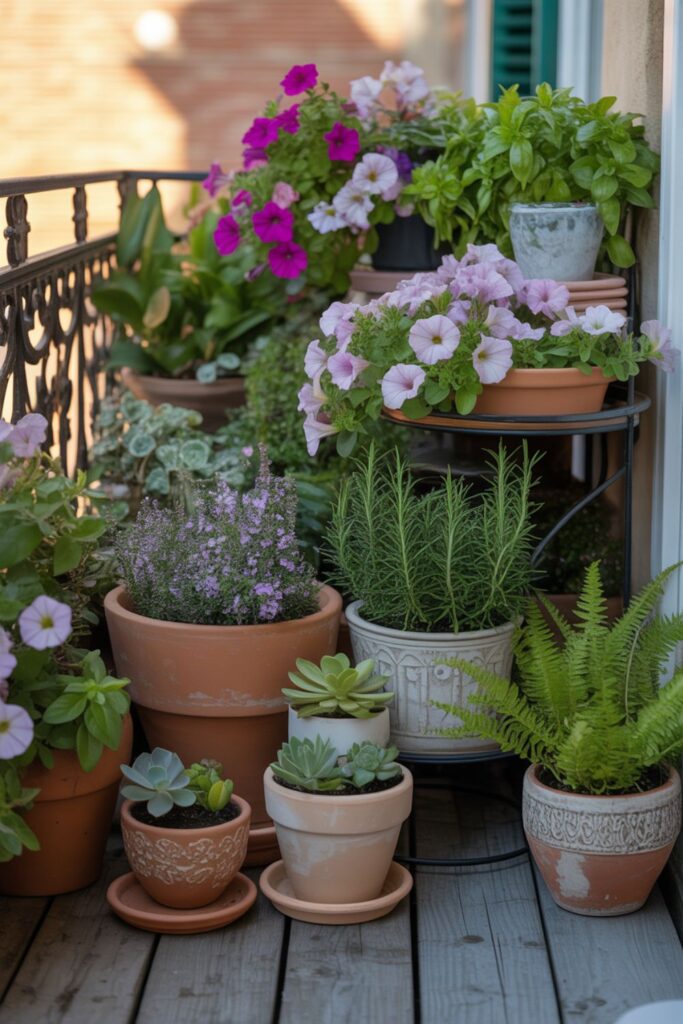
Compact evergreens provide year-round structure. Dwarf boxwood, small hollies, or miniature conifers stay manageable in containers while offering permanent greenery. These plants anchor your small patio garden with consistent texture through all seasons.
Trailing plants soften edges without consuming floor space. String of pearls, trailing petunias, or ivy cascade over pot rims, adding volume without width. Their downward growth emphasizes vertical dimension on your compact outdoor patio.
Dwarf fruit trees deliver both beauty and harvest. Miniature citrus, compact apple varieties, or patio peaches grow successfully in large containers. They provide spring flowers, summer fruit, and architectural presence without overwhelming your small patio space.
Herbs in vertical planters combine culinary function with greenery. Mount herb planters on walls with basil, thyme, rosemary, and parsley. They smell wonderful, taste fresh, and consume zero floor space. This edible small patio garden makes your limited area work harder.
How Can I Create Ambiance in Small Outdoor Spaces?
Layered lighting sets moods perfectly. Combine overhead string lights with table lanterns and pathway lighting. Multiple light sources at different heights create depth and interest. This ambient lighting design makes your tiny patio feel like a curated retreat rather than an afterthought.
Water features add soothing sounds. Small tabletop fountains or wall-mounted water features provide peaceful background noise without consuming floor space. The trickling water masks urban sounds and creates resort vibes on your compact patio.
Scented plants engage multiple senses. Lavender, jasmine, gardenias, or herbs release fragrances that enhance your space. Scent makes small outdoor areas feel more immersive and memorable. Position fragrant plants near seating for maximum impact.
Outdoor textiles soften hard surfaces. Add outdoor rugs, cushions, and throw blankets in coordinating colors. These soft elements create comfort and visual warmth that make your small patio feel inviting rather than stark or industrial.
What Are Budget-Friendly Small Patio Ideas?
Paint transforms everything for minimal investment. Paint concrete floors, wooden fences, or metal railings in fresh colors. A gallon of paint costs $30-50 but completely changes the feel of your small outdoor space. Choose light colors to maximize the expanding effect.
DIY vertical planters use repurposed materials. Mount old gutters, PVC pipes, or wooden pallets as wall-mounted gardens. These budget small patio projects cost under $30 in materials while adding substantial greenery without floor space.
Thrifted furniture saves hundreds. Find chairs, small tables, or benches at garage sales or Facebook Marketplace. Paint them all one color to create cohesion. Secondhand small patio furniture costs 70-90% less than new while functioning identically.
Solar lighting eliminates electrical costs. Dollar stores and discount retailers carry solar string lights, stake lights, and lanterns for $1-10 each. These affordable lights require no wiring and brighten your compact patio without ongoing expenses.
How Do I Make a Balcony Patio Feel Like a Room?
Outdoor rugs define boundaries like indoor floors. Choose rugs sized for your balcony dimensions, leaving a border around edges. The rug signals that this space is a designated room rather than just a pass-through. This balcony design trick grounds your furniture arrangement.
Enclosed sides create room-like intimacy. Add privacy screens, lattice with vines, or outdoor curtains along railings. When your small balcony has defined walls, it reads as an outdoor room rather than exposed platform. This enclosure makes the space feel protected and intentional.
Ceiling elements establish overhead boundaries. Hang string lights, shade sails, or a small pergola structure above your balcony. This visual ceiling completes the room feeling. Your balcony patio becomes a three-dimensional space rather than a two-dimensional platform.
Styled accessories mirror indoor rooms. Add throw pillows, a small coffee table with books or candles, and wall art designed for outdoors. These finishing touches signal that your small outdoor room deserves the same attention as interior spaces.
What Mistakes Should I Avoid in Small Patio Design?
Oversized furniture overwhelms proportions. A sectional designed for large patios makes small spaces feel cluttered and impassable. Choose furniture scaled appropriately, measure twice, buy once. Apartment-sized and bistro furniture exists specifically for compact patios.
Too many colors creates visual chaos. Limit your palette to three colors maximum. More colors fragment small outdoor areas and make them feel busy. Cohesive color schemes unify spaces and create that intentional, designed look despite size constraints.
Neglecting vertical space wastes precious real estate. When floor space limits you, grow upward. Utilize walls, hang baskets, mount planters, and emphasize height. Flat small patio designs feel more cramped than those with vertical interest and dimension.
Dark colors everywhere shrink spaces visually. While dramatic, all-dark schemes make small patios feel smaller and sometimes oppressive. If you love dark tones, use them as accents against lighter backgrounds to maintain some visual expansion.
How Can I Maximize My Apartment Balcony?
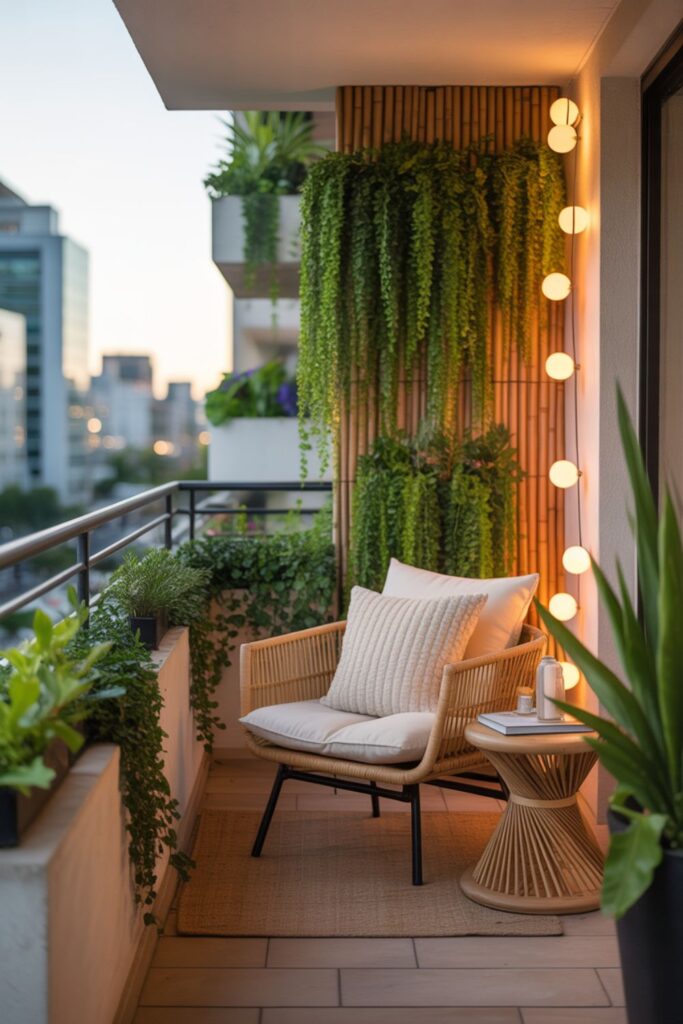
Corner furniture configurations use every inch. L-shaped seating fits perfectly into corners without wasting the angle. Add a small corner table or plant stand. This apartment balcony layout creates complete outdoor living in minimal square footage.
Railing planters eliminate floor clutter. Mount planters directly on balcony railings for flowers and herbs without consuming usable space. These specialized planters hook securely over rails. Your apartment patio garden flourishes while all floor space remains open.
Folding furniture adapts to apartment needs. Fold chairs and tables flat against walls when not in use. This flexibility means your small apartment balcony can shift from storage to entertaining in minutes. Lightweight pieces move easily without requiring help.
Vertical storage keeps essentials handy. Mount narrow shelving or hanging organizers on exterior walls for drinks, cushions, or reading materials. Everything stays accessible but off your limited floor. This apartment balcony organization maintains functionality without clutter.
Read More: 20+Porch Ideas Transform Your Outdoor Space
What Are Year-Round Small Patio Ideas?
Evergreen plants maintain structure through all seasons. Boxwood, holly, or dwarf conifers in containers provide consistent greenery even in winter. These anchors keep your small patio looking intentional year-round rather than barren half the year.
All-weather furniture survives seasonal changes. Invest in truly weather-resistant pieces that stay outside year-round. Avoid furniture requiring seasonal storageyou likely lack space for that. Quality all-season patio furniture costs more upfront but eliminates storage headaches.
Layered lighting extends usability. Good lighting lets you use your small outdoor space even during shorter winter days. String lights provide ambient glow while wall sconces offer task lighting for reading or dining regardless of season.
Flexible textiles adapt to temperatures. Keep lightweight cotton cushions for summer, add fleece throws for fall. Store seasonal textiles in your bench storage, swapping them as weather changes. This year-round small patio approach maintains comfort across temperature swings.
How Do I Add Personality to a Tiny Patio?
Statement planters serve as focal points. One large, colorful, or uniquely shaped planter draws attention and establishes your style. This bold piece anchors your small patio design and gives it personality beyond generic outdoor spaces.
Themed decor tells your story. Choose coastal, bohemian, modern, or farmhouse themes and commit. Cohesive styling makes compact patios feel curated rather than randomly assembled. Every piece contributes to your chosen aesthetic.
Personal collections displayed outdoors add character. Group vintage watering cans, colorful glass bottles, or interesting stones you’ve collected. These personal touches make your small outdoor space uniquely yours rather than catalog-generic.
Bold accent colors inject energy. While keeping most colors neutral, add one vibrant hue through cushions, pots, or accessories. That pop of personality prevents tiny patios from feeling timid or apologetic about their size.
Frequently Asked Questions
What is a good size for a small patio?
Small patios typically range from 48-100 square feet. The minimum functional size is about 6×8 feet (48 square feet) for a bistro set, while 10×10 feet (100 square feet) accommodates modest seating and dining areas comfortably.
How do you arrange furniture on a small patio?
Arrange small patio furniture along perimeters or in corners to maintain clear pathways. Use appropriately scaled pieces, bistro sets instead of dining tables, loveseats instead of sectionals. Leave at least 24-30 inches between furniture for comfortable movement.
What colors make a small patio look bigger?
Light colors like white, cream, soft gray, and pale blue make small outdoor spaces appear larger by reflecting light. Cool tones (blues and greens) recede visually, while warm colors (reds and oranges) advance and shrink spaces.
How can I add privacy to a small patio without losing space?
Use vertical privacy solutions like tall potted plants, wall-mounted lattice with climbing vines, or outdoor curtains on railings. These approaches create enclosure without consuming floor space on your compact patio.
What is the best flooring for small patios?
Light-colored, large-format tiles or pavers work best for small patio flooring. Diagonal laying patterns create visual expansion. Outdoor rugs also work beautifully, defining space while adding color and hiding less attractive underlying surfaces.
Conclusion
Your small outdoor patio isn’t a limitation, it’s an opportunity for creative, efficient design that larger spaces never force you to master. These 52 ideas prove that compact dimensions can’t stop you from creating beautiful, functional outdoor living areas. Start with one key change perhaps vertical gardening, strategic furniture, or a fresh color scheme and build from there as you discover what works for your specific space.
The most successful small patio designs embrace their intimate scale rather than fighting it. Cozy beats cramped when you make intentional choices about every element. Your limited square footage means less to maintain, lower costs, and faster transformations than sprawling patios require. Choose multi-functional pieces, think vertically, keep colors light, and remember that negative space is your friend. That tiny balcony or modest backyard corner can become your favorite retreat not despite its size, but because of the focused attention small spaces inspire. Take action this weekend with one project, and watch your compact outdoor space transform into the intimate escape you’ve been craving.

